It starts with morning coffee on a private deck and ends with the softness of a king-size bed under canvas. Somewhere in between, there’s a locally sourced charcuterie board and maybe even a cedar soaking tub. If that doesn’t sound like your average night in the woods, it’s because it isn’t. This is glamping, a glamorous twist on traditional camping (hence the portmanteau), and it’s quietly revolutionizing the way people connect with the outdoors.
Once considered a niche for novelty-seekers, glamping has gone mainstream in a big way. In 2024, the global glamping market was estimated at around $3.45 billion, with North America claiming over 25% of that pie. Meanwhile, the U.S. segment alone stood at approximately $561 million in 2023, eyeing growth to $1.3 billion by 2029, a 15% annual expansion (finance.yahoo). Globally, projections point toward $6.18 billion by 2030, riding on a 10–12% CAGR (compound annual growth rate) (grandviewresearch).
Financial analysts aren’t the only ones taking notice, though. Millennials and Gen Z, those aged 18 to 32, account for nearly 45% of glamping revenue, with 33 to 50-year-olds following at about 28% (grandreviewresearch). Their interest isn’t fleeting or seasonal: online searches for “glamping” have shot up 143% in three years (ecostructures). And according to OHI’s 2024 Generational Camping Report, 29% of surveyed campers said the availability of glamping options influences where they choose to camp. Young travelers are no longer satisfied with “roughing it”; they want connection to nature hand-in-hand with creature comforts.
Consider KOA’s mood: in a recent interview, its CEO Toby O’Rourke noted that 61% of new campers in 2024 were Gen Z or millennials, and that “almost every KOA has some form of glamping” (businessinsider). Hard-wall glamping units like domes, treehouses, and tiny-home cabins average $531 per night, while soft-wall options such as bell tents and tipis average between $175–$179 per night, reflecting how structure type directly impacts pricing (sageoutdooradvisory).
Common guest sentiments when considering a park can be summarized as simply as, “We didn’t want to camp, but we wanted to be there.” These potential guests are interested in being in that area or what that park offers, but they want a more comfortable experience. Glamping draws that bridge between convenience and wilderness.
Across the country, wedding tents, Scandinavian-style cabins, geodesic domes, treehouses, A-frames, safari tents, and luxury or vintage trailers are popping up in state parks and privately owned parks. Looking for inspiration on how to bring fresh glamping vibes to your own park? Take a peek at what’s out there.
Under Canvas, a pioneer in the movement, wow guests in Moab, Zion, the Smoky Mountains and beyond with safari-style tents featuring king beds and curated hikes. Want to go ultra-luxury? Some glamping experiences take outdoor indulgence to a whole new level. At Camp Sarika by Amangiri in Utah, guests sleep beneath canvas pavilions outfitted with private plunge pools, spa-style bathrooms, curated excursions, and chef-prepared meals—starting around $3,500 per night. In Montana, The Resort at Paws Up delivers safari-style tents with butler service and gourmet cuisine across a 37,000-acre ranch, with nightly rates ranging from $1,155 to over $4,000 depending on the season and tent style. Yes, we did say ultra-luxury.
And for even more inspo, don’t skip checking out these OHI members listed on Go Camping America that prove glamping comes in endless creative forms: Capitol Reef RV Park & Glamping (UT), Bolt Farm Treehouses (TN), Timberline Glamping at Amicalola Falls (GA), Lago Valle Wine Glamping Eco Resort (CA), Moab RV & Glamping Resort (UT), Baypoint Landing (OR) and Battenkill Glamping Resort (NY).
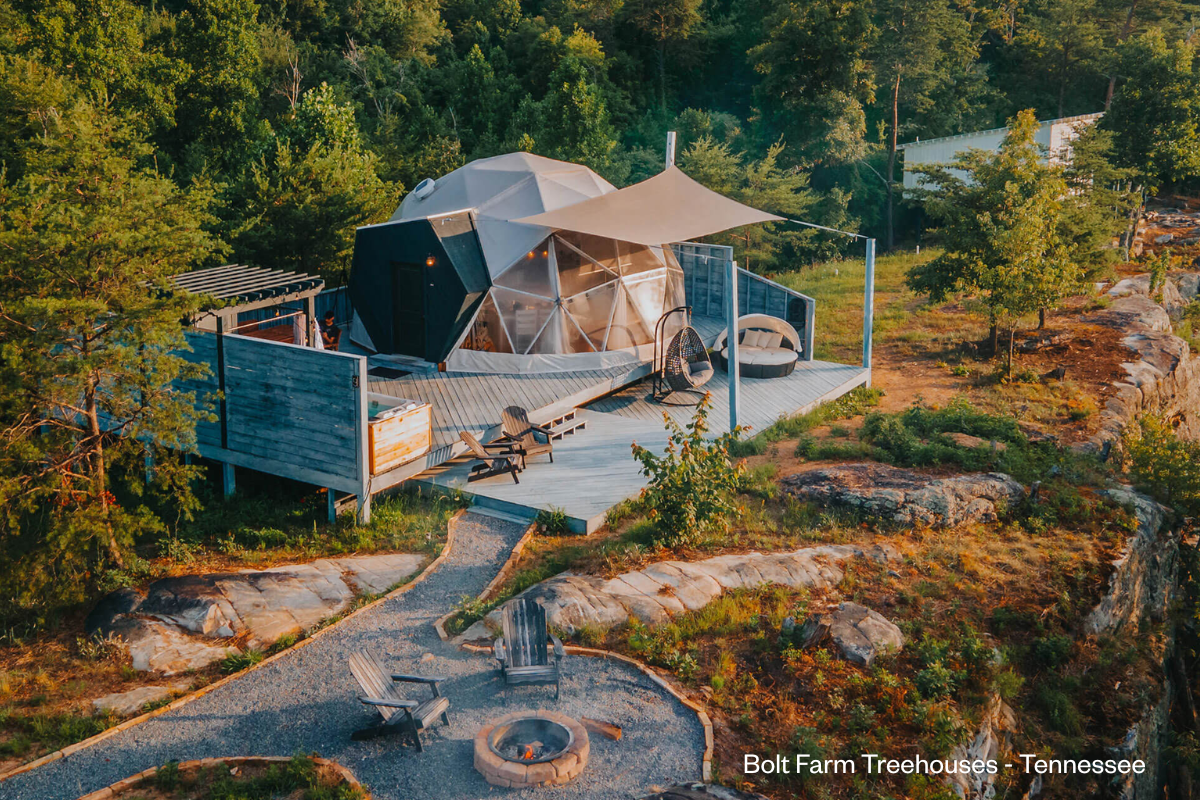
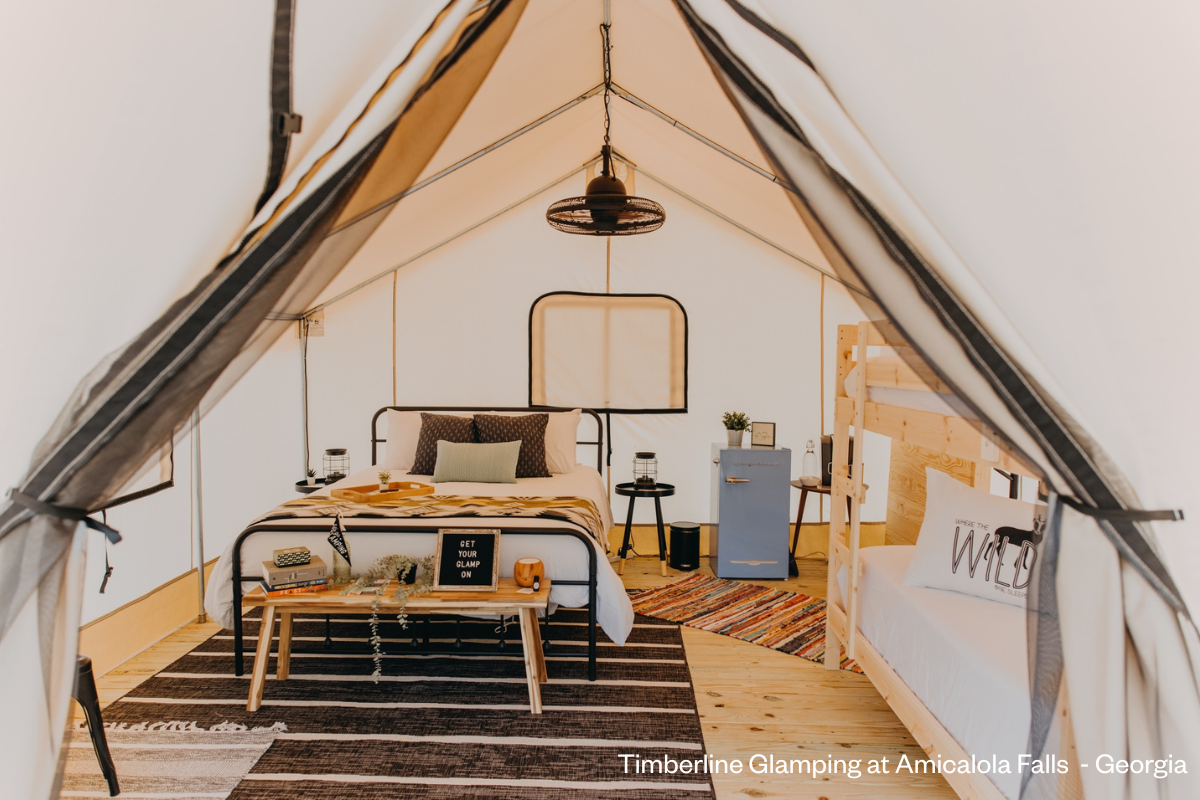
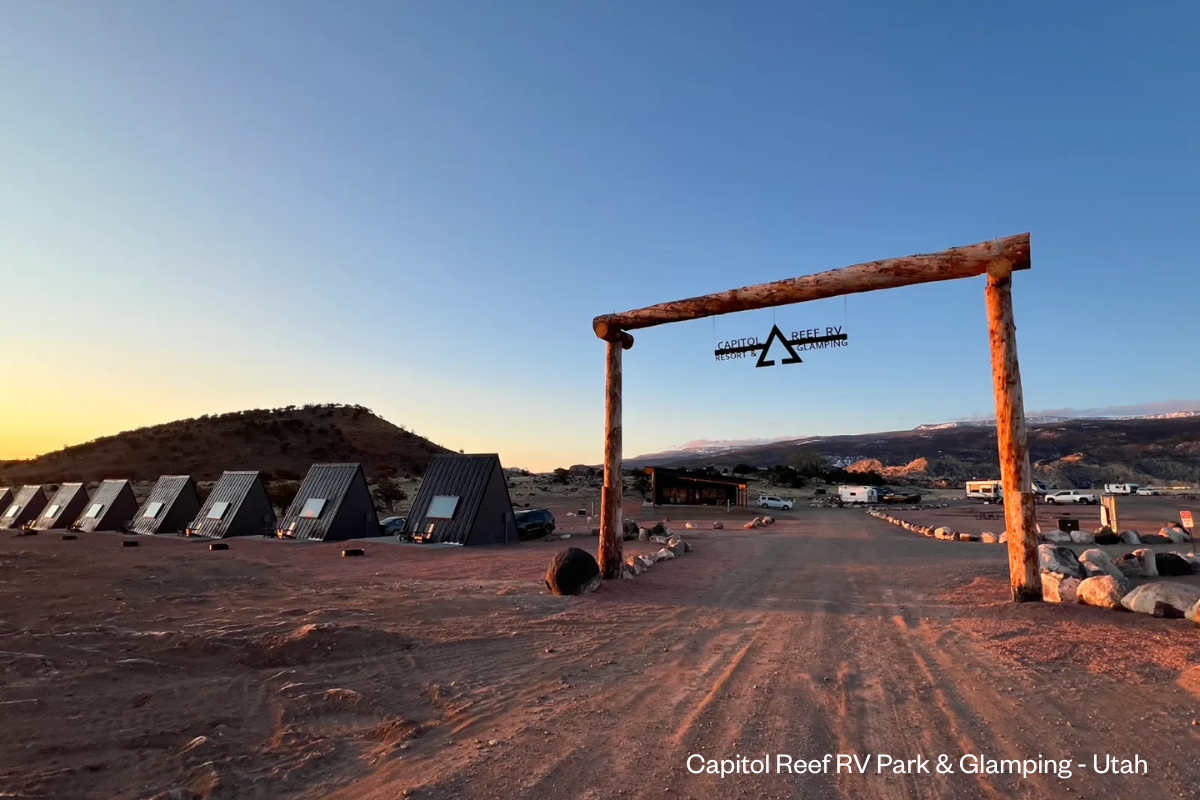
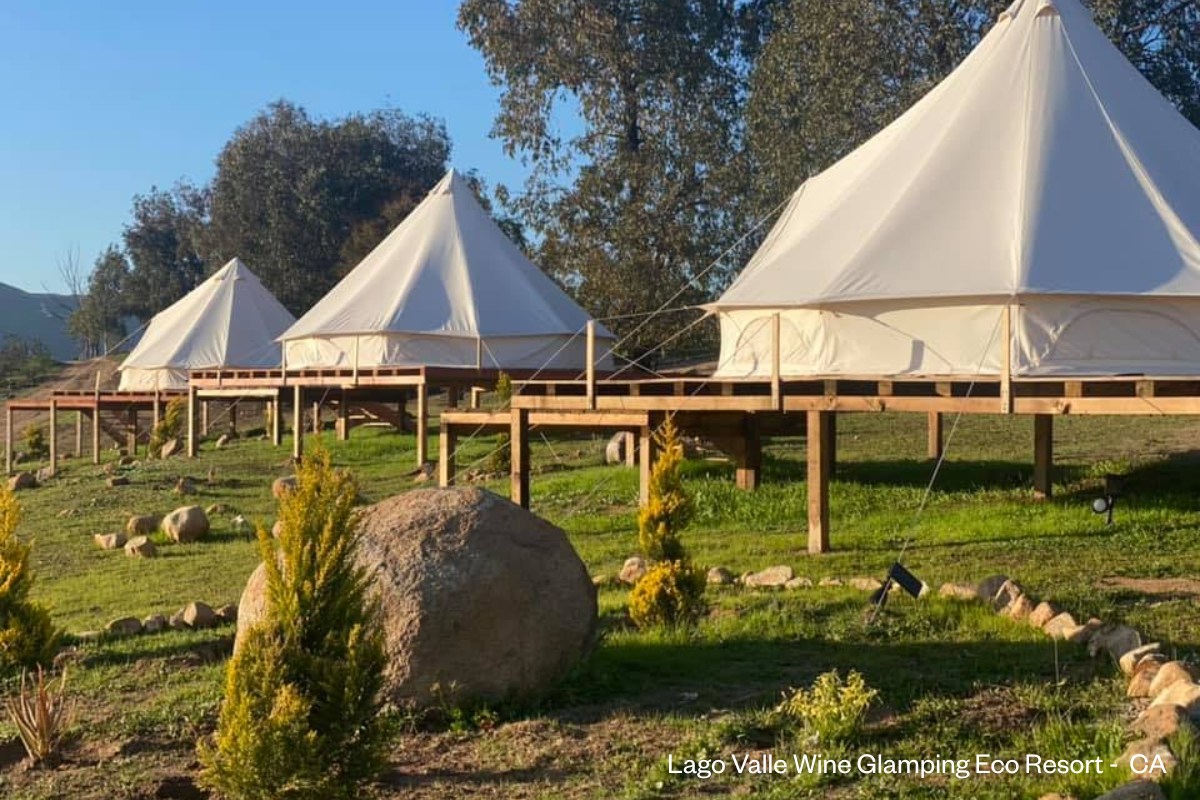



But you don’t have to build a luxury resort to be part of the story. For parks across the U.S., glamping can be as simple as adding a handful of high-quality accommodations like tents, domes, tiny homes, or retrofitted Airstreams, to tap into a new kind of traveler. Many parks already are, and the results speak for themselves: higher nightly rates, longer stays, more off-season bookings, and a wave of social media buzz.
And if all of this has really piqued an interest in implementing glamping at your park in some way, check out the OHI marketplace for a solid starting point. With over a dozen trusted supplier members offering everything from canvas tents to prefab luxury cabins, parks can explore options that suit their budget, land use, and long-term goals. Some are plug-and-play; others allow for more customization. And because these suppliers understand the unique needs of outdoor hospitality businesses, installation, durability, and guest experience are all part of the package.
The best part? You don’t have to glamp to thrive, but if you’re curious, it’s never been easier to experiment. Start with one unit. Place it somewhere scenic. Add a few personal touches like some solar string lights and cozy throws. You might be surprised how quickly it books up, and how often those guests become your most loyal fans.
Glamping doesn’t encourage people to abandon camping. It meets guests where they are, and for many of today’s adventurers, that place is somewhere between rustic and refined. It’s the outdoors—but with better pillows.
And maybe that’s the real power of glamping. It brings new people into the fold, people who might not be interested in pitching their own tent or purchasing their own RV but are now waking up and stepping barefoot onto a wooden deck and falling more in love with the outdoors.
